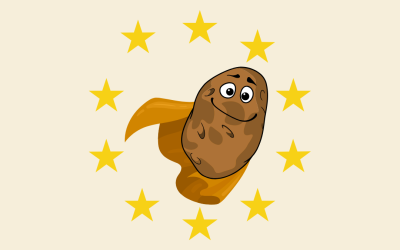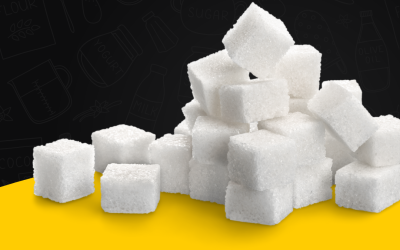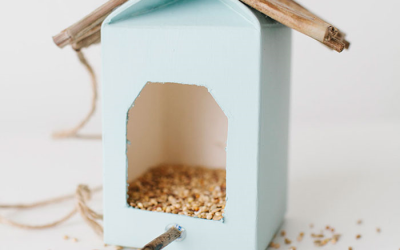Overview
Primary learners will experience a “taste” of the manufacturing world by creating, filling, and packaging their own playdough donut orders. They will also gain insight and inspiration for their own creations, from the manufacturing processes of NB’s own donut experts, Mrs. Dunster’s.
FREE RESOURCE AVAILABLE (see details at bottom of this post)
NB Curricular Connections
English Language Arts
- Strand: Reading – Big Idea: Reading Comprehension – Skill Descriptor: Construct meaning from oral stories, read-alouds, and text.
Mathematics
- Strand: Number – Big Idea: Number Sense
Explore Your World
- Strand: Playfulness – Big Idea: Imagination and Creativity – Skill Descriptors: Examine new activities, interests, and possibilities.
- Strand: Playfulness – Big Idea: Exploration and Problem Solving – Skill Descriptors: Invent approaches to practical problems.
What You’ll Need
- Book – D is for Donut (by: Rachel Tiechman)
- Chart paper & marker
- Playdough (2-3 containers per group)
- Brown paper bags (20)
- Assorted playdough tools: cutters, rollers, cookie cutters, etc.
- Donut Order printable cards (see Learning Activity downloads)
- Placemats (Optional)
- PowerPoint Presentation – D is for Donut (see downloads)
Instructions
Read Aloud – D is for Donut: Before reading, ask: “What is your favorite donut?” and allow learners to share. Write down their responses on chart paper. During reading, encourage learners to read the alphabet letters with you on each page. After reading, have learners think about their favorite donut mentioned in the story and describe it to an elbow partner.
Donut Order #1: Divide learners into small groups of 3-4. Begin with, “Ordinarily, this is our classroom. Right now, however, it is going to transform into a Donut Factory. We are now “manufacturers” of donuts. What would that term mean – manufacturer?” Use slide 2 of the PPT and allow learners to share their thinking. Click again for the definition to appear.
A manufacturer is a person or company that creates lots of goods, by hand or by machine, to sell. (Miriam-Webster, 2024.)
Use slide 3 and instruct: We are going to create, with our hands, donuts for customers wanting to buy our delicious recipe. I am going to give each group a couple of containers of playdough, a donut order, and a brown paper bag. You are to read your donut order, make the donuts, and then bag them for your customer to pick-up. Each donut order tells how many donuts the customer wants. After the supplies and orders have been handed out, get groups to start making and bagging their order.
Once groups have completed their orders, have groups switch their bags with a group to do a quick check – do they have the right number of donuts, do they have the right kind? Return the brown paper bags and have learners consider: Let’s think about the size and shapes of our donuts, what do you notice about the donuts that we made? When we buy donuts from a real-life manufacturer, what is the size and shape like?
Mrs. Dunster’s Manufacturing Process: Using slides 4-10 of the PPT, take a little tour through New Brunswick’s own donut manufacturing experts, Mrs. Dunster’s, and see how they create, package, and fill orders of thousands and thousands of donuts each day.
Invite learners to point out tools, machines, and processes that allow Mrs.Dunster’s to provide excellent donuts. Using slide 10, ask learners: How many different people does it take to make tasty and delicious donuts at Mrs.Dunster’s? (Have learners list the different tasks and jobs that they noticed throughout the process. Also have learners think about even more people that we didn’t see but are just as important – janitorial and maintenance crew, managers, graphic designers, accountants, etc.)
Donut Order #2: Have learners re-use the same playdough BUT this time adding two elements when creating and filling their donut orders:
- playdough tools (for accurate measuring and size)
- dividing up tasks (who will roll out, who will cookie cutter, who will decorate, and who will inspect for quality control & then bag)
Pass out NEW donut order cards (see attached), brown paper bags, and playdough tools. After the orders are complete, switch bags with a group to ensure the correct quantity and quality. Feel free to repeat if time permits, exchanging donut orders, so learners can experience different tasks.
Wrap-Up & Discussion: Ask learners: Why does Quality Control matter? What is different about the donuts we created with Donut Order #1 and Donut Order #2? (Possible responses: the second order – same size, better quality, faster time, better product, etc.) How did it feel to be a manufacturer? What did you learn from today’s quality control experiment?
Extension Ideas:
- Using the playdough donuts, review 2D shapes and 3D objects. What different shapes are donuts? Can you come up with a brand-NEW donut shape? Create a donut shape museum and invite another class to examine the playdough donuts that you created.
- Donut Factory Center – keep the donut creation going! Place the playdough and tools in a center and allow learners to create and re-create orders.
- Donut Art – Have learners choose their favorite donut and paint it, using the same background as the cover for D is for Donuts. Display on a bulletin board.
- Have a donut-making PARTY: Try one of the donut recipes in the back of the book. Divide up tasks, like real manufacturers! Surprise some “school customers” with a tasty treat and a kind note of appreciation.
- Reach out to a local baker for a tour – observe how they handle large orders firsthand!
- Purchase a bag or box of donuts – have learners do a full quality control inspection. What do we notice? Are they the same size, shape, quality? (Be sure to taste for quality, too!)
Reflection Activity
Please see the attached PDF for several choices on how you and your learners can reflect upon today’s activity.
Acknowledgements
Miriam-Webster, Manufacturer definition, 2024.
A SPECIAL THANKS to Laurel Dyker and the Grades 1 and 2 classes of ASD-W’s Kingsclear Community School for piloting this activity in the spring of 2024.
Resource & Feedback
New Brunswick Teachers – Do you wish to try this activity with your class and receive a free copy of D is for Donut (by: Rachel Tiechman)?
Email nathan.langille@gnb.ca to inquire about this free resource! Provide name of resource requested and school mailing address.
Supplies of the book are limited.
After you receive the book and complete the lesson, all we ask is that you provide some feedback by filling out a short survey click here. You will also be entered in a monthly draw for Centres of Excellence prizes!




